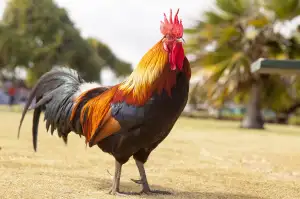Discover the Best Substitutes for Cornstarch: Enhance Your Culinary Creations with these Kitchen Staples

- Reasons to look for substitutes for cornstarch
- Arrowroot powder as a natural alternative to cornstarch
- Tapioca starch as a versatile substitute for cornstarch
- Potato starch as a gluten-free option for replacing cornstarch
- Rice flour as a suitable alternative for thickening sauces and gravies
- Wheat flour as a pantry staple that can be used in place of cornstarch
Cornstarch is a fine white powder derived from the endosperm of corn kernels. It is commonly used in cooking and baking as a thickening agent, imparting a smooth texture to sauces, soups, and gravies. Its neutral flavor makes it a popular choice for thickening both sweet and savory dishes. Cornstarch is also frequently used as a coating for fried foods, providing a crispy exterior. With its ability to thicken without adding any distinct taste, cornstarch has become an essential ingredient in many culinary creations.
Reasons to look for substitutes for cornstarch
There are several reasons why one might want to look for substitutes for cornstarch in their culinary creations. Firstly, cornstarch is a common allergen and can cause adverse reactions in individuals with corn allergies. Secondly, some people prefer to avoid corn-based products due to concerns about genetically modified organisms (GMOs) or the presence of pesticides. Additionally, cornstarch has a tendency to create a glossy finish when used as a thickening agent, which may not be desirable in certain dishes. Lastly, finding alternatives to cornstarch allows for experimentation and adds variety to cooking techniques.
Arrowroot powder as a natural alternative to cornstarch
Arrowroot powder is a natural alternative to cornstarch that can be used in various culinary creations. It is derived from the arrowroot plant, which is native to South America. Arrowroot powder has a similar texture and thickening power as cornstarch, making it an excellent substitute. It is also gluten-free, making it suitable for those with dietary restrictions. When using arrowroot powder as a substitute for cornstarch, it is important to note that it has a lower gelatinization temperature and may break down if cooked for too long or at high temperatures. However, when used correctly, arrowroot powder can enhance the texture and consistency of sauces, soups, and desserts without altering the taste.
Tapioca starch as a versatile substitute for cornstarch
Tapioca starch is a versatile and popular substitute for cornstarch in cooking. It is derived from the cassava root, making it a natural and gluten-free option. Tapioca starch has similar thickening properties to cornstarch and can be used in a variety of recipes such as sauces, soups, and desserts. It creates a smooth and glossy texture, making it ideal for custards and puddings. Additionally, tapioca starch works well in high-heat applications like baking, as it retains its thickening power without breaking down. Its neutral flavor ensures that it won't overpower the taste of your dishes. Overall, tapioca starch is an excellent alternative to cornstarch that will enhance your culinary creations.
Potato starch as a gluten-free option for replacing cornstarch
Potato starch is an excellent gluten-free option for those looking to replace cornstarch in their culinary creations. Made from the starch extracted from potatoes, this versatile ingredient is a popular choice in gluten-free cooking. It has a neutral flavor and works well as a thickening agent in sauces, soups, and gravies. Potato starch also provides a smooth and glossy texture to dishes without altering the taste. It is important to note that potato starch has a higher gelatinization temperature compared to cornstarch, so it may require slightly more heat and time to thicken properly. Nonetheless, its gluten-free nature makes it an ideal substitute for individuals with dietary restrictions or preferences.
Rice flour as a suitable alternative for thickening sauces and gravies
Rice flour is a suitable alternative for thickening sauces and gravies. Made from finely ground rice, this gluten-free flour adds a smooth texture to dishes without altering the taste. It works well in both hot and cold liquids, making it ideal for a variety of recipes. To use rice flour as a thickener, simply mix it with water or broth before adding it to your sauce or gravy. Keep in mind that rice flour may take longer to thicken compared to cornstarch, so be patient and allow it to cook for a few extra minutes if needed. With its neutral flavor and excellent thickening properties, rice flour is an excellent choice for those looking to avoid cornstarch in their culinary creations.
Wheat flour as a pantry staple that can be used in place of cornstarch
Wheat flour is a versatile pantry staple that can be used as a substitute for cornstarch in many recipes. It has the ability to thicken sauces, gravies, and soups just like cornstarch. However, it is important to note that wheat flour has a stronger flavor compared to cornstarch, so it may alter the taste of the dish slightly. To use wheat flour as a substitute for cornstarch, you will need to use twice as much flour as the amount of cornstarch called for in the recipe. Simply mix the flour with cold water or broth until it forms a smooth paste before adding it to your dish. Keep in mind that wheat flour contains gluten, so it may not be suitable for those with gluten sensitivities or allergies.
In conclusion, there are several excellent substitutes for cornstarch that can enhance your culinary creations. Arrowroot powder is a natural alternative that works well in sauces and desserts. Tapioca starch is a versatile option that can be used in a variety of dishes. Potato starch is a gluten-free alternative that provides a similar thickening effect. Rice flour is another suitable substitute for thickening sauces and gravies. Lastly, wheat flour is a pantry staple that can be easily used in place of cornstarch. With these options available, you can confidently experiment with different substitutes and elevate your cooking to new heights.
Published: 17. 11. 2023
Category: Food



